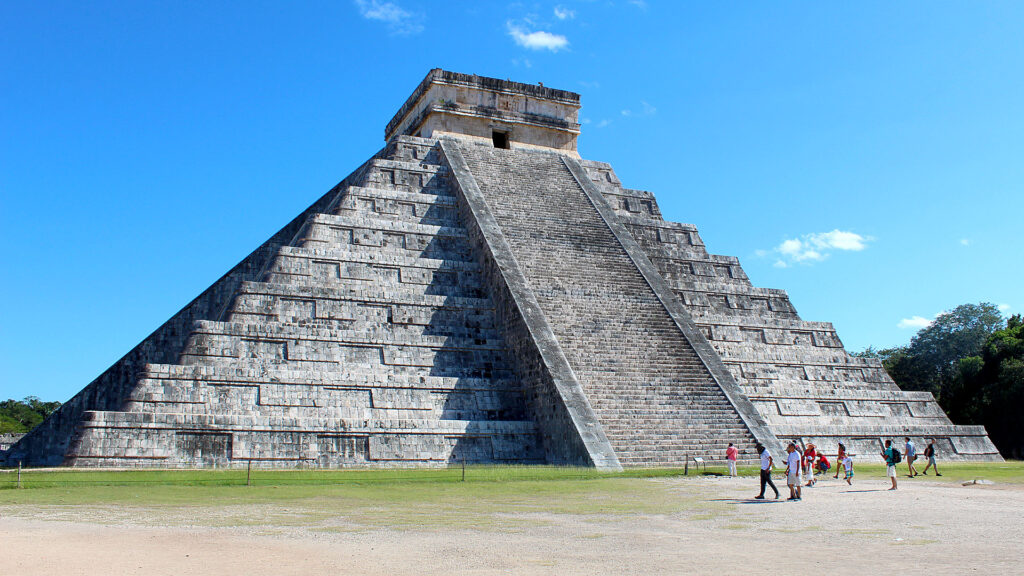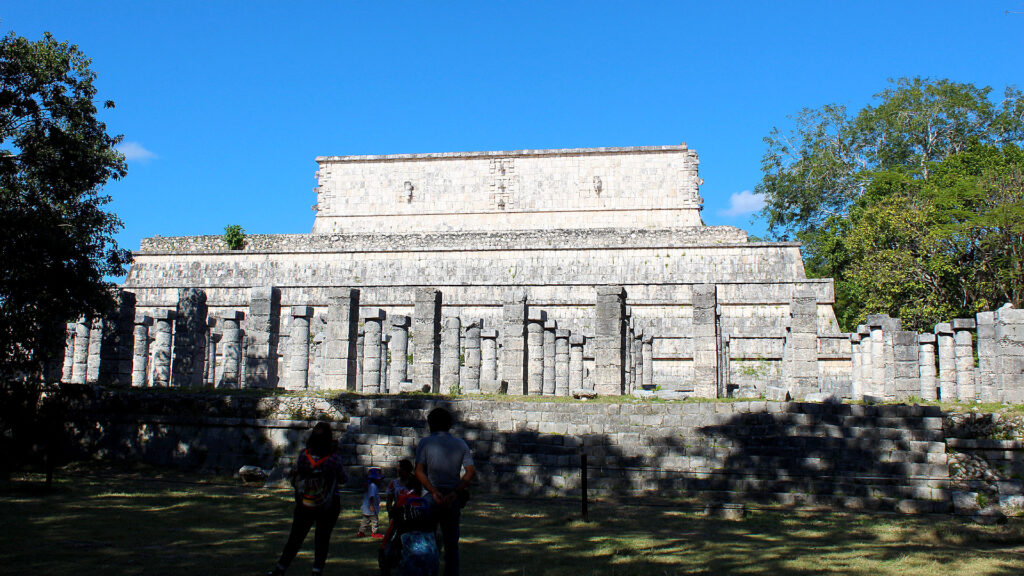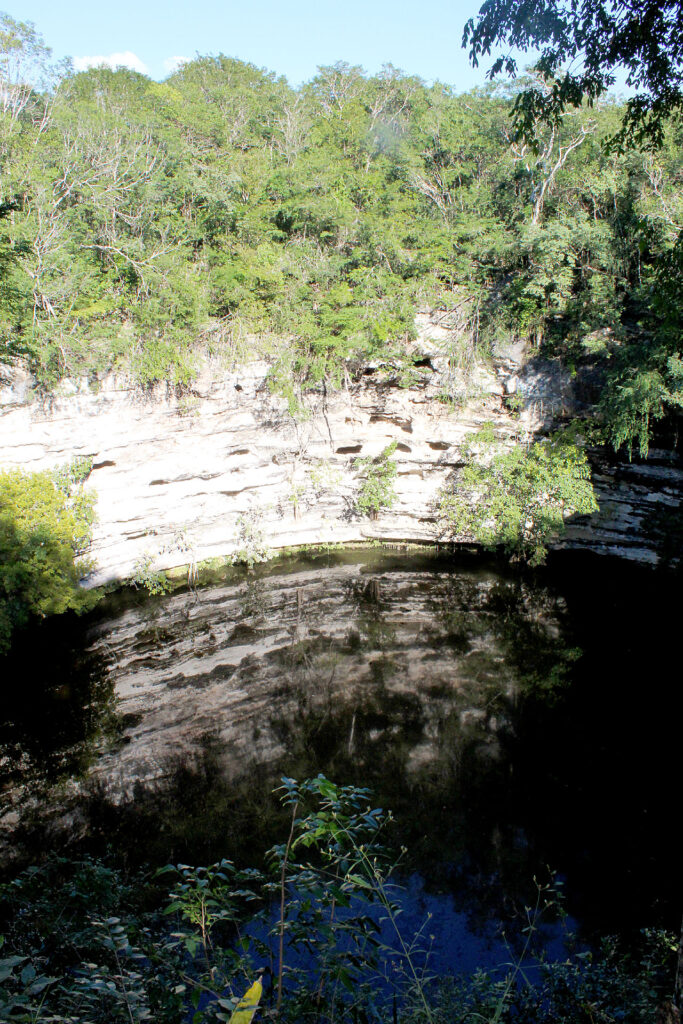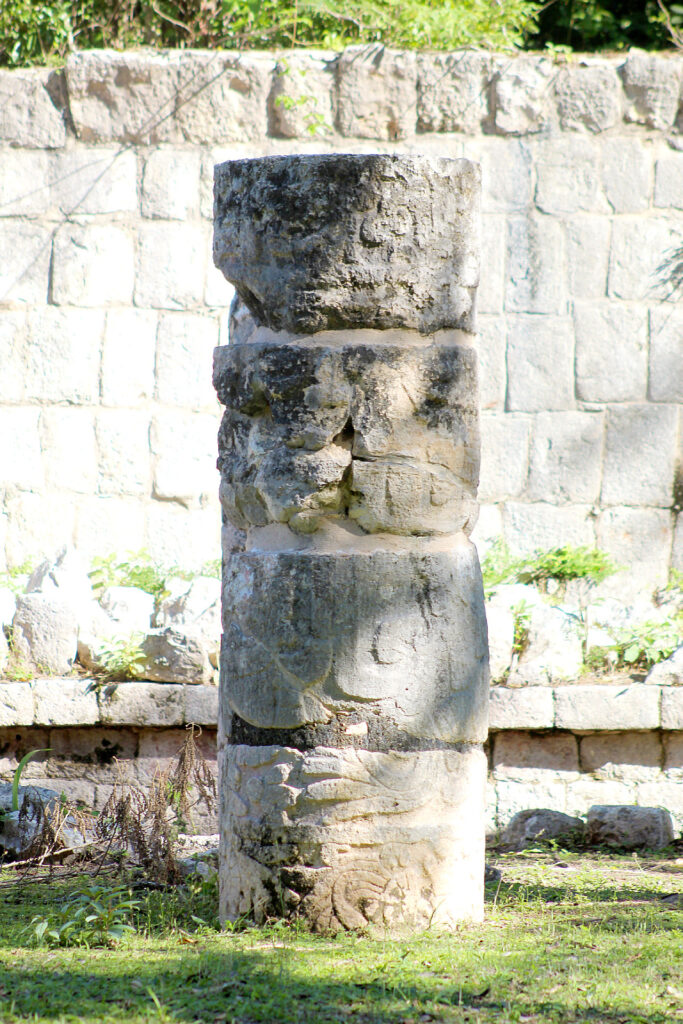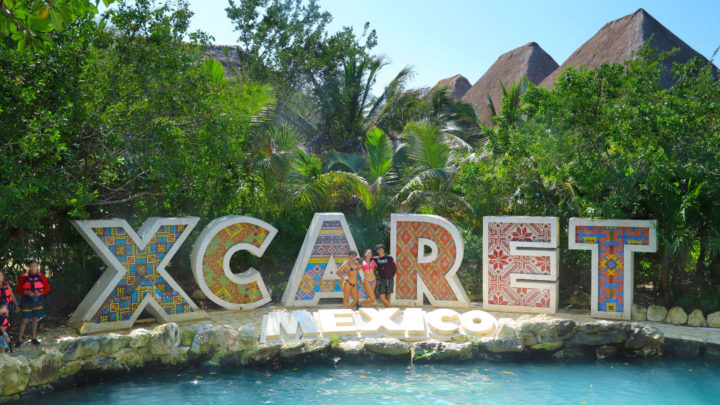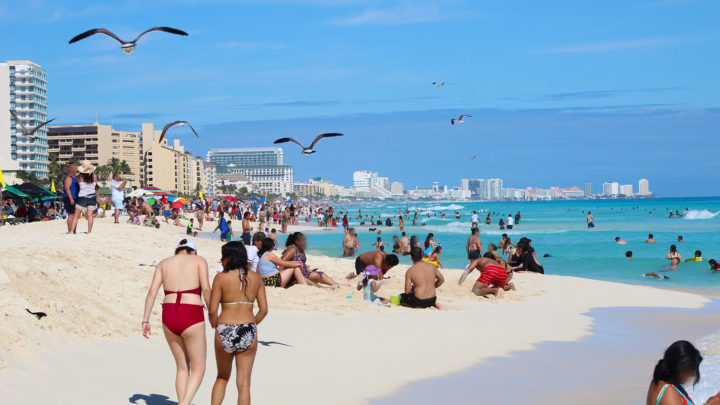Thousands of years before Christ, one of the most advanced civilizations of all time developed in the Yucatan Peninsula. The Mayans ruled Mesoamerica for more than a millennium thanks to their scientific, architectural, and artistic knowledge, all of which is evident in the ruins of Chichén Itzá.
We had the chance to explore this wonder, yet it took us not one, but two visits to reveal all its secrets.
Video (TL;DR)
Plain Visit Versus Guided Tour
The pre-Hispanic city of Chichén Itzá is located in the Mexican state of Yucatán. This ancient settlement represents the most visited tourist attraction in the region, with multiple tours and guided visits accesible all over the Riviera Maya.
We got to explore Chichén Itzá on our own, without guides or intermediaries, on our first trip to Cancun. You can get there by private transportation, the Mayan Train, or your own vehicle. That way you can arrive at any time and stay as long as you want before closing. However, you’ll have to walk a long way toward the attraction’s entrance.
We enjoyed our visit on our own, since we got to freely explore all of Chichén Itzá, but lacking the slightest bit of context of its importance. We were baffled by the actions of the people around us, like why were they clapping at the ruins. Later on we discovered the true reason and it turned out to be much more complex.
Some time later we returned to Chichén Itzá as part of a tour. The bus arrived there in the afternoon let us off at the entrance to the archaeological site.
We immediately realized that we did this backwards, since we should have come to Chichén Itzá the first time as part of a tour and then come back to explore everything with context. The guided tour helped us debunk our misconceptions about Chichen Itza, starting with its name.

1 Chichén Itzá’s Name Is Way Longer
The place we know as Chichén Itzá isn’t actually called that. Our Mayan guide taught us how to pronounce its extensive name for him in Yucatec Mayan: Tu chi’ le ch’e’eno’ ts’ono’ot jwáayo’ob ja.
The translated phrase means: “At the mouth of the well of the water sorcerers.” Those sorcerers, the Itza, were the former inhabitants of the settlement. The well in question is a cenote, a limestone sinkhole or depression, often underground, which stores water from rainfall or other nearby sources.

The Yucatan Peninsula is full of these cenotes, which were of utmost importance for the Mayans. The Chichén Itzá complex includes a Sacred Cenote where the Mayans threw offerings.
Many Chichén Itzá tours include visits to cenotes as part of the Mayan experience. Our tour took us to the Chichikan cenote north of Valladolid, a Mayan town taken over by the Spanish conquerors.
Like all cenotes in Yucatán, Chichikan houses a closed ecosystem with its own fauna, flora, crystal clear water, and dark bottom. A refreshing stop and an eye-opening view to the world of the original inhabitants of the area.
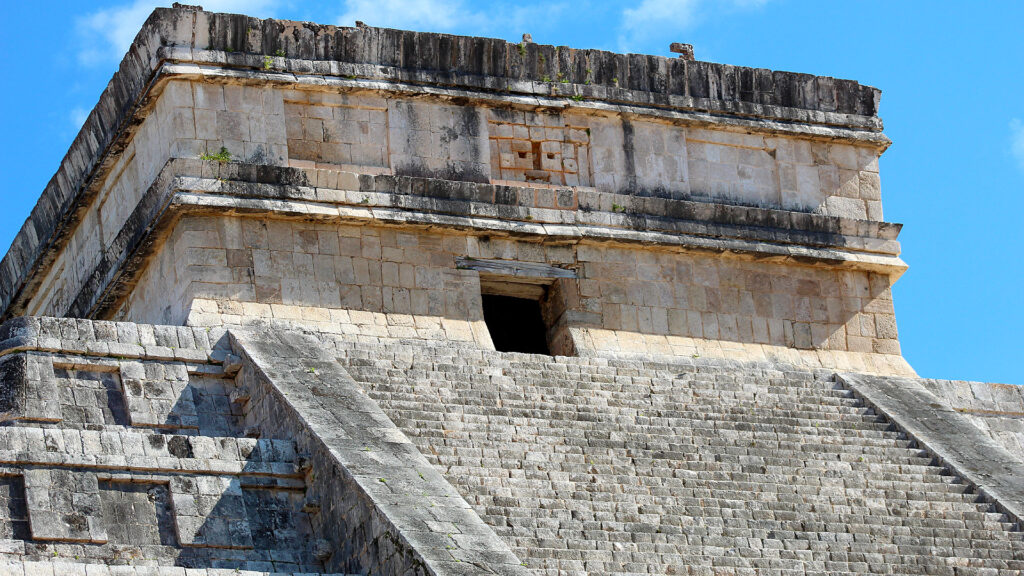
2 The Temple at Chichén Itzá Is Actually Three Stacked Structures Over a Cenote
How important were cenotes to the Mayans? The main edifice at Chichén Itzá, called the Castillo or the Temple of Kukulcán, was built on one. To be precise, the Castillo consists of three structures, built one on top of the other, all above the cenote.
The Mayans considered cenotes portals to the underworld and the Temple of Kukulcán could have served as a method of communication with the gods. Hence the importance of the clapping.
The temple, and I say “temple” because our tour guide insisted it’s a temple and not a pyramid, receives the sound wave from the clap as it climbs the steps and the resulting echo takes the form of a bird’s chirp, specifically the quetzal. According to our guide, the Mayans brought offerings to Chichén Itzá, clapped in front of the temple and the quetzal’s response represented the satisfaction of the gods.

3 Chichén Itzá Has Been Restored Several Times
We were unable to confirm this fact besides our tour guide’s testimony. There are even opinions floating around that accuse Chichén Itzá renovators of creating this sound effect, since the site has been remodeled on several occasions.
The archaeological record indicates that the Chichén Itzá settlement was abandoned in the 13th century and taken back by the jungle, although it served as a Mayan pilgrimage center. Its ruins were rediscovered by American and European explorers in the 19th century, which resulted in several archaeological and structural restoration initiatives.
In that case, how much can it be said that the structures from Chichén Itzá are originals? We can ask that question about any ancient monument still standing. If you replace every part of the Ship of Theseus, your Toyota Corolla, or Chichén Itzá, are they still the same they were at the beginning?
The most important question would be: does this reduce their merit? If Notre Dame Cathedral reopens with restored columns or the Sagrada Familia never got its remaining towers built that does not diminish their beauty or historical relevance. In the case of Chichén Itzá it’s even appropriate, since the Mayans themselves rebuilt the Temple three times over itself. The reason for this is related to one of the most well-known achievements of that civilization.
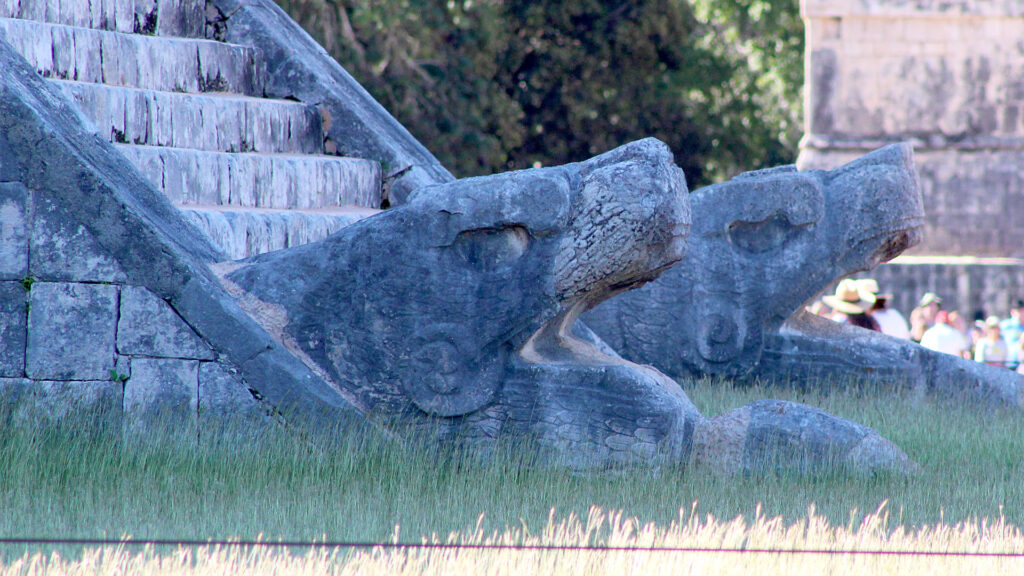
4 The Temple of Kukulcán Is a Gigantic Mayan Calendar
The Mayans are famous for their ancestral calendar, one of the most accurate even today. Their civilization developed three calendars thanks to their advanced studies in mathematics and astronomy.
The Haab or civil calendar more closely resembles our current calendar, with one year divided into 365 days, but distributed over 18 months with 20 days each. Tzolk’in, or the divine calendar, consists of 260 days and was used for religious and ceremonial purposes. The Long Count, their third calendar, measures when the Haab and the Tzolk’in resynchronize and start over. This event occurs every 52 years, which for the Mayan equals a human lifespan.
It is speculated that each main temple structure represents one of the Mayan calendars, the outer shell being the Haab and the internal ones the Tzolk’in and the long count. The exterior of the Castillo has four sides with 91 steps, which together with the upper platform add up to 365, the days of the year.
The Castillo is also famous for the appearance of the god Kukulcán himself during each equinox. Twice a year the sunset light aligns itself with the shadows of the monument and both form the undulating body of a snake that connects with the stone head of Kukulcán at the base. When the god arrived in March, the Mayans farmed. On their return in September, it was time to harvest.
The temple’s optical illusion, along with its function as a calendar and its characteristic echo, bring us to the last important fact about Chichén Itzá.

5 Only Chichén Itzá’s Temple Is a Wonder of the World
Even though UNESCO classifies the whole of Chichén Itzá as a World Heritage Site, the New7Wonders consortium only designates the Castillo as one of the seven Wonders of the World. The same thing happens with the Taj Mahal, where they only declared the marble mausoleum a World Wonder ignoring the rest of the complex.

Although no one denies the Castillo’s popularity over all other buildings in Chichén Itzá, limiting the merit to only one structure is reductive and misleading, since the rest of the ruins are just as impressive.
There’s the Great Ball Court, which comes with its own particular sound effect. Ritual matches were held there which shared similar elements to soccer and basketball. It’s believed that the winners were sacrificed as heroes, while the losers were demoted to a lower social class with greater probability of a dishonorable sacrifice.
On the other hand is the Temple of the Warriors, a structure with sculptures where human sacrifices were performed. Next to it you find the Group of a Thousand Columns, an excellent place for exploration and majestic photos.
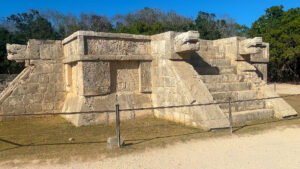
You can also discover other buildings of historical value like the Platform of Venus, the Tzompantli, Plataform of the Eagles and the Jaguars, the Market, the Caracol, the Palace of Sculpted Columns, and many more.
The Sacred Cenote itself has its merit since a large part of Chichén Itzá’s archaeological discoveries are offerings thrown in it that were dredged from the bottom. Even street vendors contribute to the environment of the settlement with their whistles that imitate a jaguar’s growl.

6 Chichén Itzá Is One Part of the Mayan’s Legacy
Chichén Itzá therefore deserves to be a Wonder of the World in its entirety since its archaeological remains tell the story of a lost civilization and a culture that still remains. Today there are settlements of Mayan descendants in the Yucatan Peninsula, as well as in Guatemala, El Salvador, Belize, and Honduras.
Tours to Chichén include a visit to one of these Mayan villages, where tourists are part of an energetic ritual led by a shaman, then are treated to a traditional menu. These modern Mayans strive to preserve the language and traditions of their ancestors.
For example, using the information of the three calendars plus your day of birth, Mayan experts can write you your Mayan birth certificate, which determines how many cycles you have lived and your purpose in this life. A personalized souvenir which you can opt for during your trip.

Final Thoughts
The many reasons that make Chichén Itzá a must-see landmark on your next trip to southern Mexico are clear, but the real lesson we absorbed after our two visits was more profound. Exploring the ruins on our own let us appreciate the intricacies in detail, but traveling on a tour taught us about their relevance and the culture that created them.
Most of all, we understood more than ever the importance of visiting places like Chichén Itzá in a sustainable way and giving them the respect they deserve. After all, it will always be more interesting to learn the history of the place you visit than just going there to pose for a social media photo.

Get to Know Chichen Itza with Us
If you want to visit this or other destinations, remember that we’re authorized travel agents. Contact us via WhatsApp, email, or our Facebook sales page and we will reply as soon as possible.
Also check out our available deals to see more travel opportunities and plan your ideal vacation.

And Now, Some Tips
Learn the Schedule
Chichén Itzá opens every day from 8:00 a.m. to 5:00 p.m. Bear in mind, closure begins between 4:00 and 4:30 p.m. Even if you plan to take a short visit, be sure to arrive before that time to guarantee your admission.
Save on Your Visit
Entry to Chichén Itzá costs much less if you live anywhere in Mexico, especially in the state of Yucatán, as long as you show with your local ID. Mexicans enjoy free attendance on Sundays.
You can also spend less on items from street vendors around the complex near closing time.
Protect Yourself
You will be outdoors during your visit to Chichen Itza. Come prepared with comfy shoes, headwear, sunglasses, biodegradable insect repellent, and sunscreen. Remember to hydrate while you explore.
Take Care and Be Respectful
Honor the legacy of Chichén Itzá and its natural landscape as a responsible tourist.
Inside the complex, visitors are prohibited to smoke, leave trash, carry weapons, bring pets, bring food, fly drones, push others, trespass on areas marked as restricted, and above all, climb on the structures of the complex, especially the Kukulcán Temple.
Under no circumstances should you remove stones or other artifacts from the site. You disrespect the archaeological site and will possibly incur a divine curse.
Chichen Itza at Night
Looking for an alternative way to enjoy Chichén Itzá? Visit it at night on Friday and Saturday. The Kukulcán Nights show fills the settlement with lights and sound, including projections over the Castillo itself.
Where to Find It
97751 Yucatán, México
+1 (855) 577-9836 • +52 (998) 400-8543
chichenitza.com
Gallery
